SSPAL Facilities
The Sediment, Soil and Pollutant Analysis Laboratory (SSPAL) is a dedicated laboratory space for the high-resolution analysis of particle character (shape and size).
An outline of the facilities within SSPAL is provided below, including the specifications for each and the outputs from previous projects that have utilised them.
Grain Sizers
SSPAL has a range of grain sizers which are suitable for measuring the size and shape of your sample from 0.1nm to 3mm.
Microtrac Sync
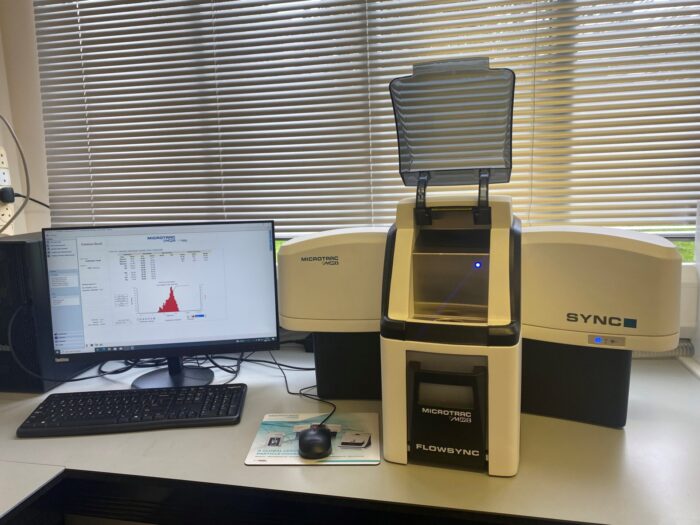
The Microtrac Sync is a unique combined laser diffraction and direct image analysis particle sizer that can measure size for particles ranging from 240nm/10 φ / Colloid to - 4mm/ -1 φ / Very Coarse Sand.
- The Sync will analyse one sample with both laser diffraction and direct image analysis methodologies.
- The Sync has a wet cell. The fill, de-bubbled, drain and rinse cycles are fully automated, with an option to dilute your sample if too high a concentration is added. There is a sonication feature to disaggregate any agglomerations.
- The Sync has two lasers for the laser diffraction analysis; red 780nm and blue 405nm. This allows analysis of particles from 240nm to 2mm.
- The Sync's direct image analysis has a range of 4.6um to 2mm, and will also produce shape characteristics for these particles. These particles can be individually interrogated in the software, and their characteristics exported either as images or in tabular form.
- The outputs from the Sync can be either a pdf report, excel file, or split into their sediment size classes. The user can choose to export the laser diffraction data, the direct image analysis data or a combination of both analysis types.
Retsch Camsizer XT
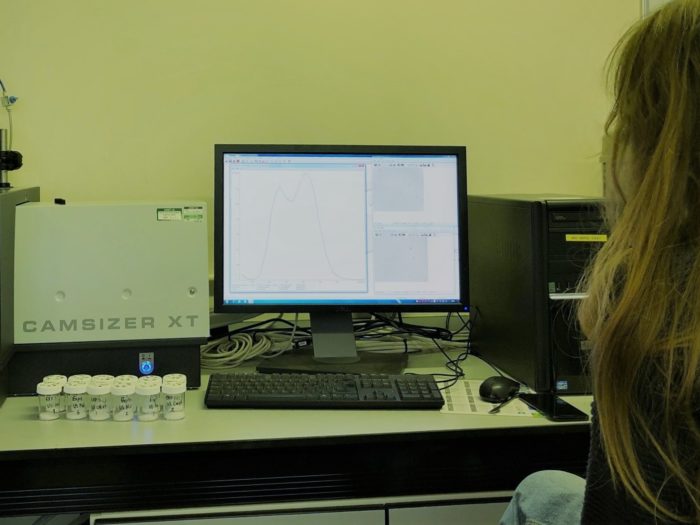 The Retsch Camsizer XT is an optical grain sizing system that has three modules, X-Fall, X-Jet and X-Flow, and can measure size and shape parameters for samples from 1um/10 φ /Clay to 5000um/ -2 φ/ Fine Gravel
The Retsch Camsizer XT is an optical grain sizing system that has three modules, X-Fall, X-Jet and X-Flow, and can measure size and shape parameters for samples from 1um/10 φ /Clay to 5000um/ -2 φ/ Fine Gravel
- The X-Fall and X-Jet are used for dry samples. X-Jet uses compressed air and suction to disperse agglomerated or fine samples during measurement. Once set up, these modules can be used with any size of sample, and the system will count each individual grain. The X-Fall module will return the sample after measurement
- The X-Flow is a wet cell, and 50ml of deionised water is used as a dispersal medium for a small subsample (approx.. 2ml when a 1% dw solution prepared) up to 600um/1 φ/Medium Sand
- The outputs from the Retsch can be chosen to be analogous with sieving (xc_min), laser diffraction (x_area) or a number of additional size calculations. The Retsch Camsizer also gives shape analysis, which again can be chosen from a wide range of calculated parameters covering 2D and 3D
- The output of the Camsizer is an Excel file and a proprietary raw data file. The Excel file contains the size and shape parameters in each size class and an average of all chosen size/shape parameters for the sample as a whole. The raw data file contains the parameters chosen by the user for the run

Cosgrove, GIE, Hodgson, DM., Poyatos-Moré, M et al. (2018) Filter Or Conveyor? Establishing Relationships Between Clinoform Rollover Trajectory, Sedimentary Process Regime, and Grain Character Within Intrashelf Clinothems, Offshore New Jersey, U.S.A. Journal of Sedimentary Research, 88 (8). pp.917-941
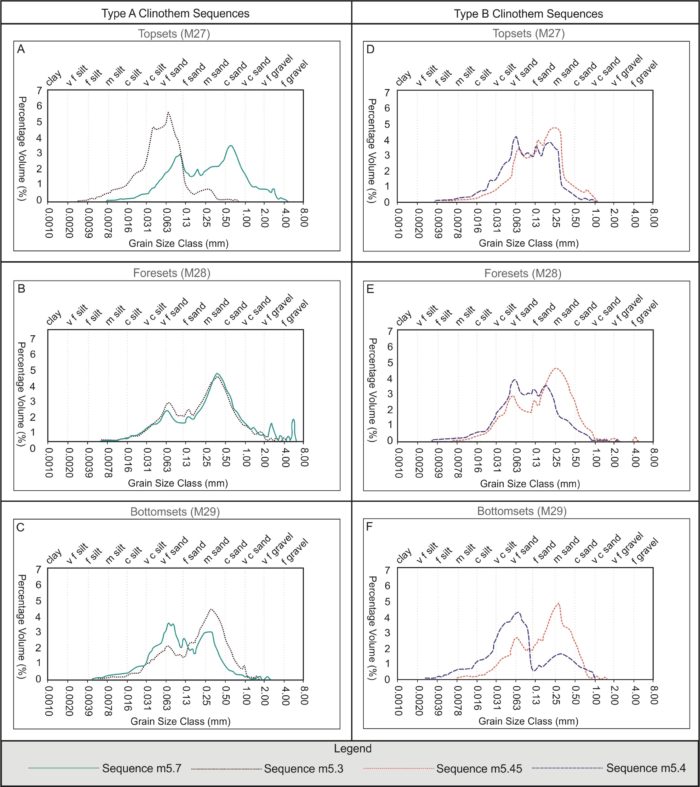
Cosgrove, GIE, Hodgson, DM., Poyatos-Moré, M et al. (2018) Filter Or Conveyor? Establishing Relationships Between Clinoform Rollover Trajectory, Sedimentary Process Regime, and Grain Character Within Intrashelf Clinothems, Offshore New Jersey, U.S.A. Journal of Sedimentary Research, 88 (8). pp.917-941
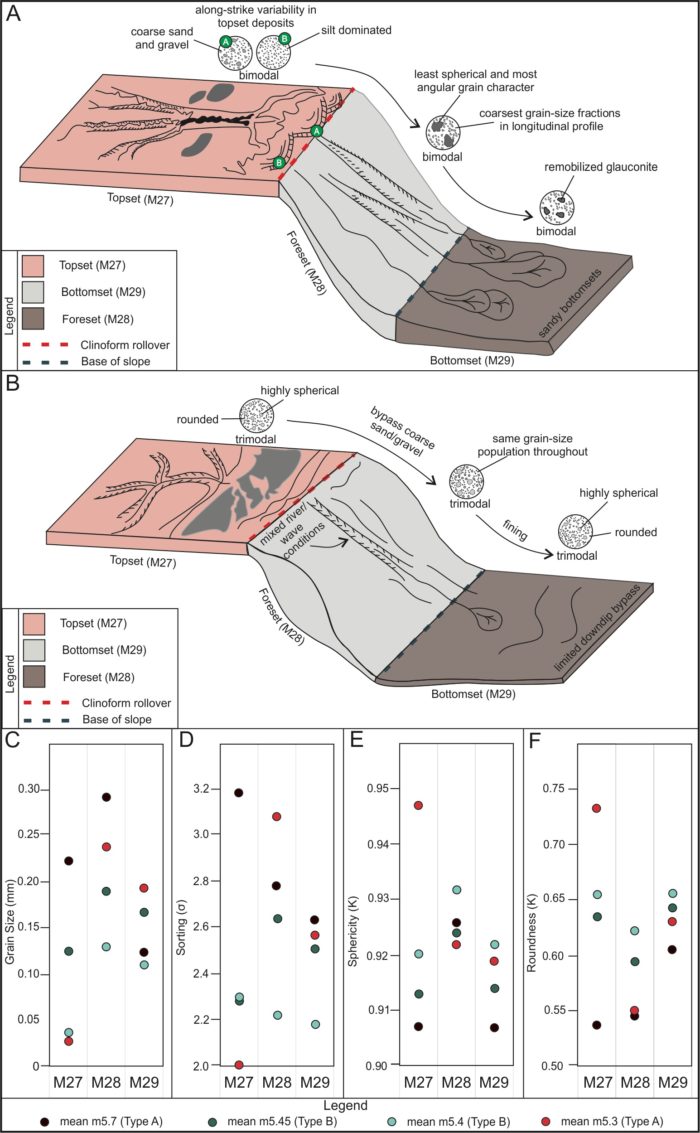
Cosgrove, GIE, Hodgson, DM., Poyatos-Moré, M et al. (2018) Filter Or Conveyor? Establishing Relationships Between Clinoform Rollover Trajectory, Sedimentary Process Regime, and Grain Character Within Intrashelf Clinothems, Offshore New Jersey, U.S.A. Journal of Sedimentary Research, 88 (8). pp.917-941
Nanosight NS3000
The Malvern Nanosight NS300 is an NTA (Nanoparticle Tracking Analysis) grain sizer with a blue LED module, which can measure size for particles from 40nm/ 20 φ / Colloid to 1um/7 φ /Clay
- The Nanosight uses a syringe to push the suspended particulate solution into the cell. The software the uses the Brownian motion of the particles and the scatter light diffraction caused by the particles to determine their size and concentration
- The output of the Nanosight can be in the format of their report including their computed graphs of concentration, size and other chosen characteristics, CSV of the raw data or AVI files for the videos of the particle tracks
Sample preparation and ancillary equipment
SSPAL has a wide range of sample preparation and ancillary equipment to ensure that you can obtain representative subsamples to analyse.
Retsch Sample Splitter
SSPAL has a Retsch Sample Splitter with a vibrating feeder chute that can split any quantity of sample (up to combined volume of the bottles used) into subsamples for grain size analysis which are equal in volume and grain size distribution
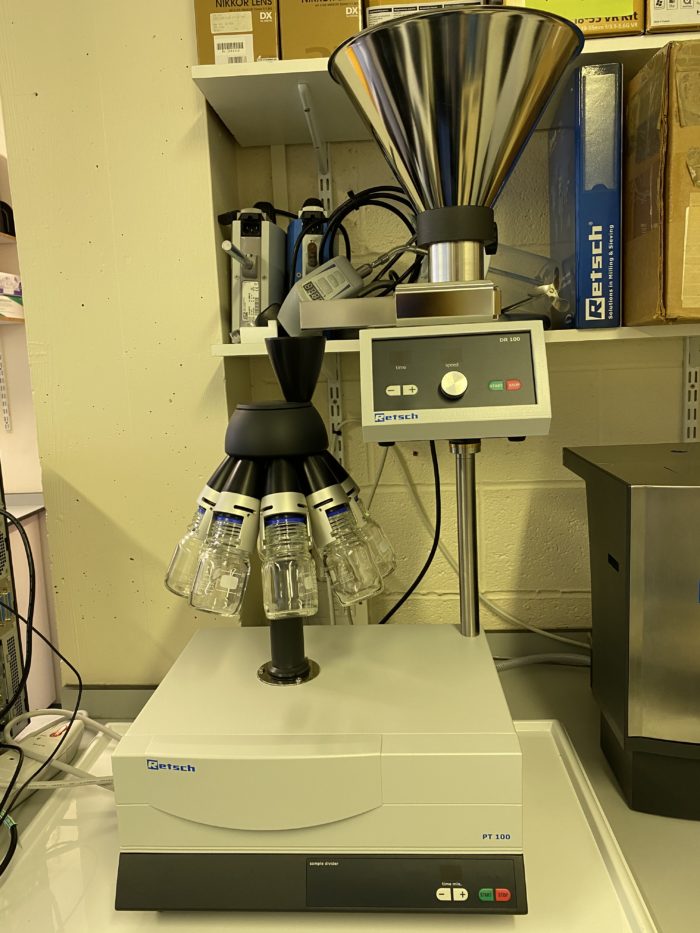
- The splitter ensures that the results of any analysis undertaken on aliquots will be representative of the whole
- The Sample Splitter can be used with glass Duran bottles, which will ensure the process is plastic free, if plastic content analysis is required
Sieves
SSPAL has two full sets of sieves at Krumbian Phi intervals, one at 100mm diameter, the other at 200mm. There is also a sieve shaker, which is suitable for use with both sizes.

Ancillary Equipment
- A high accuracy Adams PGW 753I precision balance (precision to 0.001g)
- Adams balance (precision to 0.001g)
- Two Mettler Toledo pH and conductivity meters
- Four magnetic stirrer plates
- Two ultrasound baths
- One variable temperature water bath
- One Genlab E3 drying cabinet
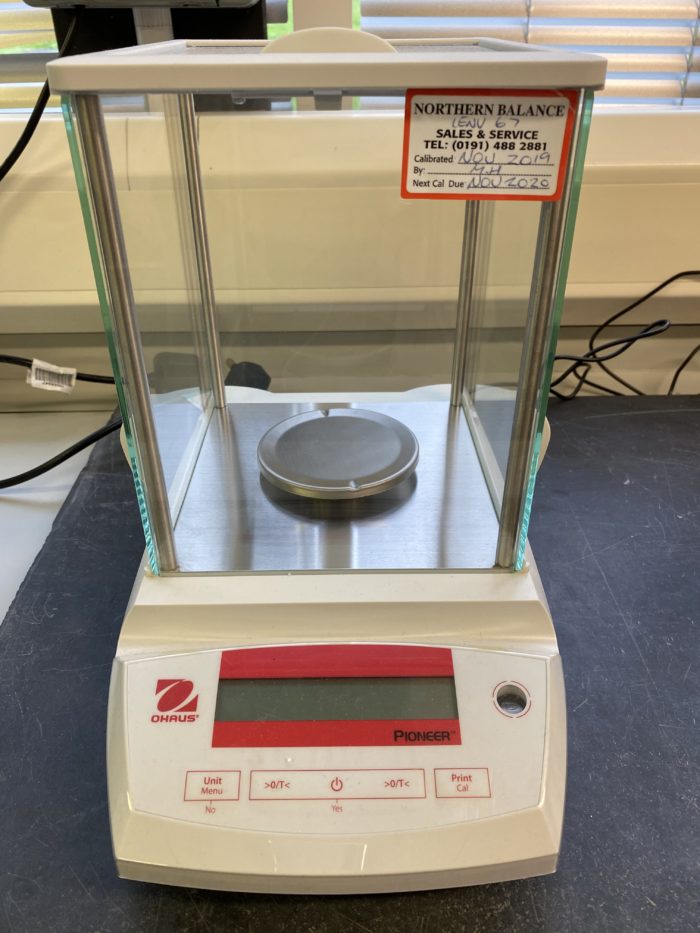
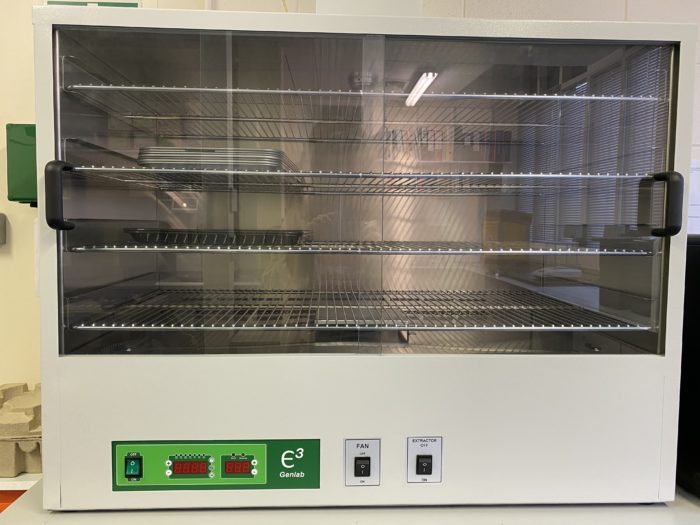
The lab has a wide range of consumables and equipment for sample preparation and analysis.
Work with us
If you'd like more information, please get in touch with Helena Brown or complete our Sample Processing Request Form.
